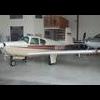Just learned my C is junk
-
Members Online
- KernalSanderz
- Blaze
- PeterRus
- gabez
- MikeOH
- BaldEagle
- 231MJ
- TCC
- Sabremech
- raymondscott0321
- Ragsf15e
- Yetti
- Andy95W
- jamiesj
- Mike Hotel
- takair
- Jarerh
- 1980Mooney
- Brian E.
- Neal George
- Geoff
- eman1200
- jamesyql
- rklems
- natdm
- 201er
- IvanP
- Rocket_Driver
- Planegary
- Scott Ashton
- Scooter
- hammdo
- Pembroke Advisor
- Skates97
- Mooney in Oz
- exM20K
- Souhail
- GoDemonDeacons
- Wes
- Justin Schmidt


Recommended Posts
Join the conversation
You can post now and register later. If you have an account, sign in now to post with your account.